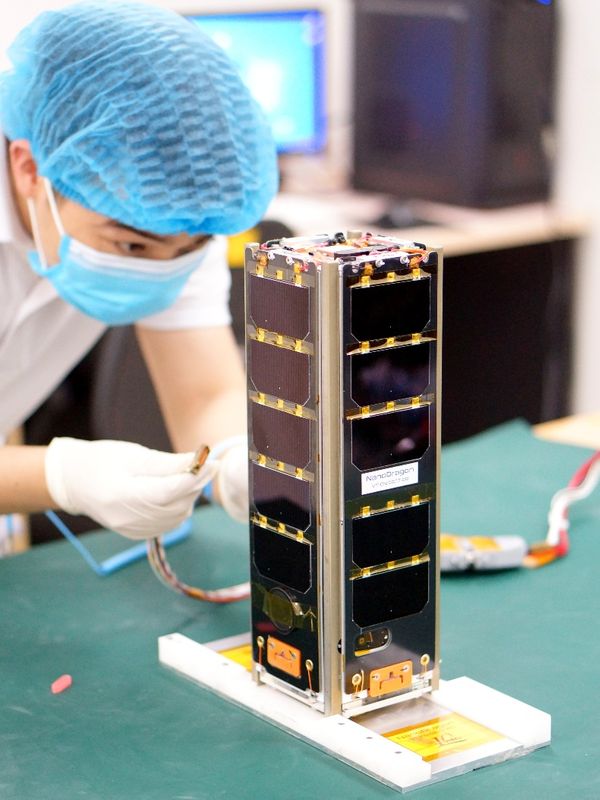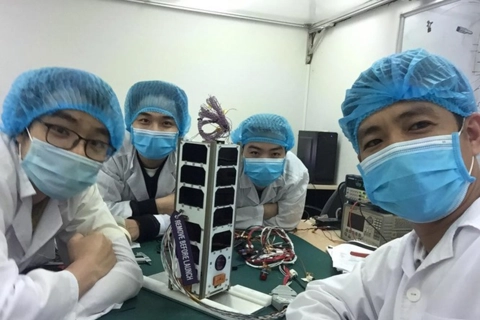Made-in-Vietnam satellite to be launched into the orbit from Japan
The satellite is tasked with using micro-satellite constellation technology to receive automatic identification signals of ships for the purpose of tracking and monitoring vehicles at sea.
A made-in-Vietnam satellite, named NanoDragon, was sent to Japan on August 12 night ahead of its planned liftoff in March 2022.
The NanoDragon satellite, a CubeSat that weighs about four kilograms, was developed by the Vietnam National Space Center (VNSC) under the Vietnam Academy of Science and Technology.
A staff member of the Vietnam National Space Center works on the NanoDragon satellite. Photo: VNSC |
It will be transferred to the Uchinoura Space Centre launch site in Kagoshima Prefecture and handed over to the Japan Aerospace Exploration Agency (JAXA) for preparations.
The satellite is the product of a project to create a nanosatellite under the National Science and Technology Program on space technology, from 2016 to 2020.
The process of researching, designing, integrating, and testing the satellite's functions was undertaken completely in Vietnam by VNSC researchers. Besides, the whole mechanical structure and source distribution circuit for the satellite was produced in the country.
The NanoDragon is expected to operate in a sun-synchronous orbit at an altitude of about 560 kilometers from Earth, according to Dr. Pham Anh Tuan, director of the VNSC.
He added that NanoDragon is tasked with using micro-satellite constellation technology to receive automatic identification signals of ships for the purpose of tracking and monitoring vehicles at sea.
Scientists at the Vietnam National Space Centre pose with their NanoDragon satellite before sending it to Japan. Photo: VNSC |
NanoDragon will have two main tasks, namely the monitoring of marine vehicles with an automatic identification system and the use of an optical imaging device to verify the quality of the satellite's position controller when operating in orbit, the VNSC director said.
He stressed that in early March, the satellite had passed all quality-control tests in Japan as it underwent vibration, shock, and thermal vacuum testing in a simulated pre-launch environment, the last steps in its hardware development, at the Kyushu Institute of Technology in Japan.
Alongside the satellite development, a ground station to operate the satellite after launch was designed and constructed at the VNSC headquarters at Hoa Lac Hi-Tech Park in Hanoi.
Prior to NanoDragon, the VNSC also successfully built the PicoDragon supermicro satellite, which weighs one kilogram and was launched into orbit in 2013.
After that, the 50-kilogram MicroDragon satellite, which was manufactured by a group of 36 staff members of the VNSC under the guidance of Japanese experts, was launched into orbit in January 2019. It has successfully sent pictures from space to its ground station in Japan.












